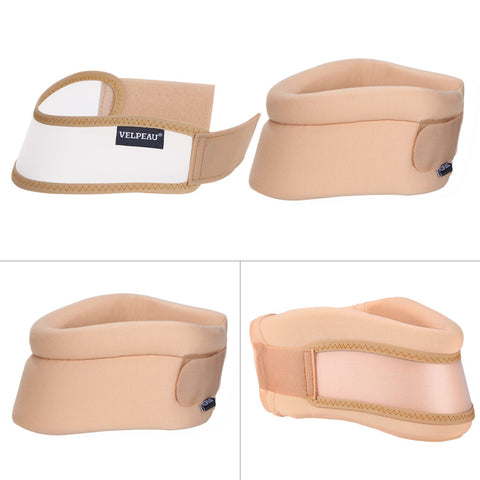Blog
Cervical Collar for Neck Support

Cervical Collar for Neck Support
1. Limiting the cervical spine’s movement, reducing repeated friction and adverse stimulation of the compressed spinal cord and nerve roots, and helping oedema and inflammation of the spinal cord, nerve roots, joint capsule, muscles, and other tissues to subside.
2. Increase the vertebral space and intervertebral foramina to reduce or even relieve the irritation and compression of nerve roots.
3. relieves muscle spasms, restores balance to the cervical spine, reduces internal disc pressure, and cushions the pressure of the disc in all directions.
4. to distract the small joint spaces, release synovial inclusions and restore the normal sequence and interrelationship between the cervical vertebrae.
5. to straighten the vertebral artery, which is twisted between the transverse foramina and improve the blood and oxygen supply to the vertebral artery.
Cervical braces can be divided into those for daily relief and correction and those for post-surgical immobilisation.
They can be broadly divided into three categories according to material: hard, soft and inflatable neck braces. Choose the most suitable neck brace for you according to your current situation.
In addition, they are generally only used in cases of major neck injuries such as fractures and acute cervical spondylosis or in cases of severe cervical spondylosis where normal life is already at risk.
The use of medical cervical braces must be in accordance with medical advice, and their use on your own is likely to cause muscle wasting, weakness and atrophy.
If you wear the brace for too long, the neck muscles will atrophy due to prolonged disuse, which will not only fail to cure the disease but may also cause more serious damage!
Therefore, it is important to follow your doctor’s instructions when taking off a medical neck brace.

The soft neck brace is more suitable for daily pain relief and correction and can be used by a wider range of people than a medical neck brace. In addition, it is much easier to use than a medical neck brace and can be worn by yourself.
It is designed with a small “v-neck” at the jawline to allow room for the chin, so you no longer have to worry about where to put your chin.
It is best to choose a medical cervical brace for severe cervical spine problems. In contrast, for mild cervical spondylosis and daily pain relief and posture correction, a soft cervical brace can be used.
1. Limiting the cervical spine’s movement, reducing repeated friction and adverse stimulation of the compressed spinal cord and nerve roots, and helping oedema and inflammation of the spinal cord, nerve roots, joint capsule, muscles, and other tissues to subside.
2. Increase the vertebral space and intervertebral foramina to reduce or even relieve the irritation and compression of nerve roots.
3. relieves muscle spasms, restores balance to the cervical spine, reduces internal disc pressure, and cushions the pressure of the disc in all directions.
4. to distract the small joint spaces, release synovial inclusions and restore the normal sequence and interrelationship between the cervical vertebrae.
5. to straighten the vertebral artery, which is twisted between the transverse foramina and improve the blood and oxygen supply to the vertebral artery.
Cervical braces can be divided into those for daily relief and correction and those for post-surgical immobilisation.
They can be broadly divided into three categories according to material: hard, soft and inflatable neck braces. Choose the most suitable neck brace for you according to your current situation.
Hard neck braces for medical use
This medical neck brace is not suitable for everyday use if it is not necessary!In addition, they are generally only used in cases of major neck injuries such as fractures and acute cervical spondylosis or in cases of severe cervical spondylosis where normal life is already at risk.
The use of medical cervical braces must be in accordance with medical advice, and their use on your own is likely to cause muscle wasting, weakness and atrophy.
If you wear the brace for too long, the neck muscles will atrophy due to prolonged disuse, which will not only fail to cure the disease but may also cause more serious damage!
Therefore, it is important to follow your doctor’s instructions when taking off a medical neck brace.

Soft neck brace
Suitable for people with mild to moderate cervical spondylosis, upper cross syndrome (forward neck tilt) and everyday neck and shoulder pain.The soft neck brace is more suitable for daily pain relief and correction and can be used by a wider range of people than a medical neck brace. In addition, it is much easier to use than a medical neck brace and can be worn by yourself.
It is designed with a small “v-neck” at the jawline to allow room for the chin, so you no longer have to worry about where to put your chin.
It is best to choose a medical cervical brace for severe cervical spine problems. In contrast, for mild cervical spondylosis and daily pain relief and posture correction, a soft cervical brace can be used.






